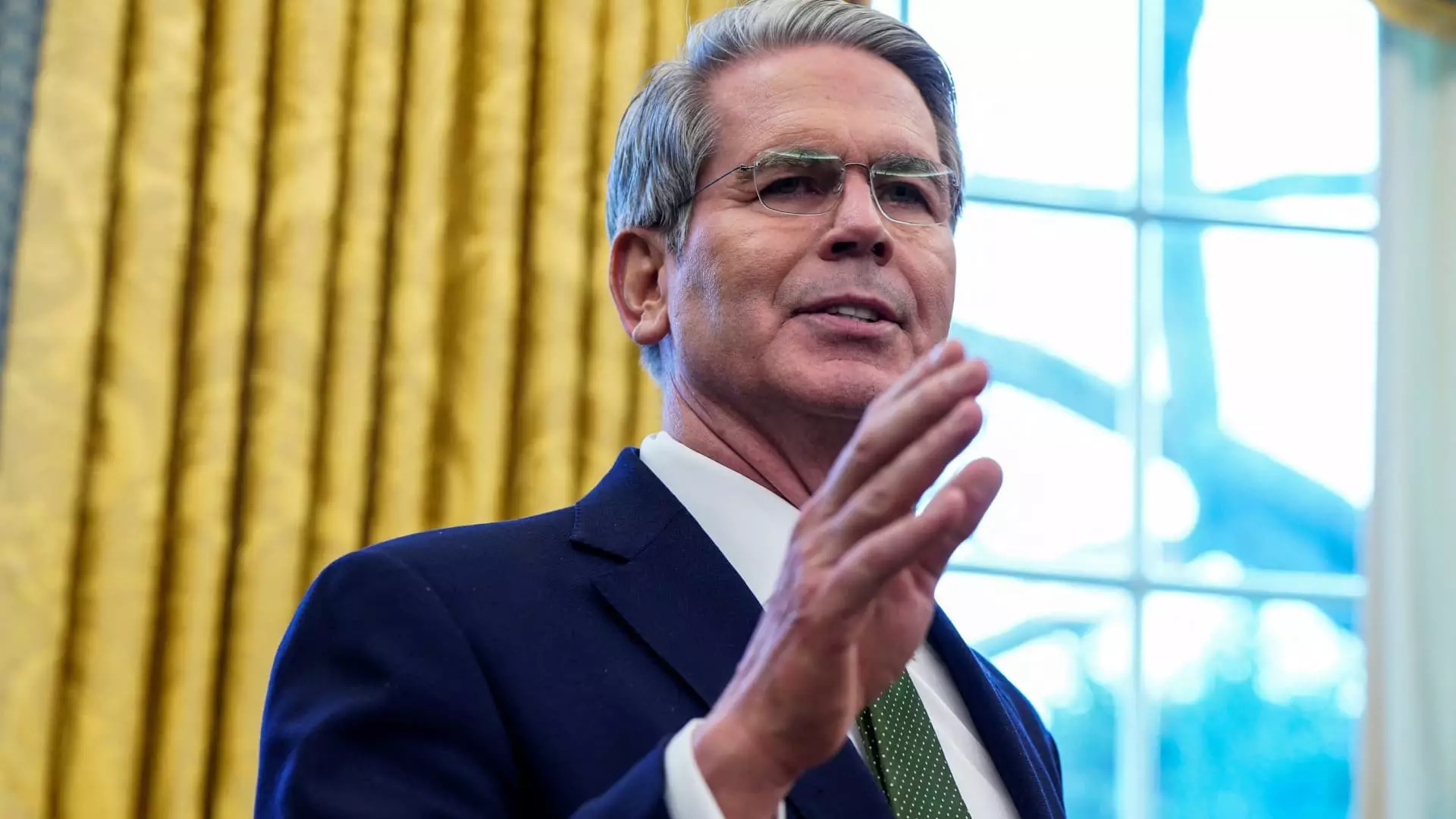In recent months, the financial strategies employed by the Trump administration have garnered scrutiny and debate among economists and policymakers alike. Treasury Secretary Scott Bessent’s recent comments shed light on the administration’s current stance regarding treasury yields and the Federal Reserve’s monetary policies. Rather than relying purely on monetary manipulation through interest rate cuts, the administration has pivoted towards a more nuanced approach that combines fiscal policy initiatives with an eye on key benchmarks like the 10-year Treasury yield.
Traditionally, a significant part of economic management involves regulating interest rates to influence spending, investment, and ultimately, economic growth. The Federal Reserve controls the federal funds rate, which serves as a benchmark for various loan products. However, the Trump administration under Bessent seems increasingly indifferent to the Federal Reserve’s maneuvers regarding interest rates. Instead, they are directing their attention to the 10-year Treasury yield as a fundamental indicator of economic health. Bessent noted that the administration’s strategy is no longer centered on pushing the Fed for cuts; rather, it wants to create an environment conducive to maintaining low yields through fiscal policy adjustments.
Integrating fiscal tools, such as tax incentives and expenditures on infrastructure, has become the cornerstone of the administration’s strategy to keep long-term interest rates manageable. This shift in focus indicates a significant departure from the Trump administration’s earlier approach where the Federal Reserve was vocally pressured to lower rates. In contrast, Bessent’s remarks suggest a pivot towards a belief that optimal regulatory and economic conditions will naturally lead to favorable interest rates without overt pressure on the Fed.
The implications of this strategy are significant. Market analysts have been observing the relationship between bond yields and broader economic indicators. Notably, since the start of Trump’s presidency, the 10-year Treasury yield has shown a downward trend, indirectly influencing rates associated with mortgages, student loans, and various consumer credit products. The ongoing rate-cutting cycle by the Fed, which commenced in September 2024, intended to lower short-term borrowing costs, yet it paradoxically resulted in increased treasury yields and inflation expectations.
In his analysis, Krishna Guha of Evercore ISI points out that the administration faces the critical task of preventing the 10-year yield from surpassing 5 percent. Such an increase could trigger a deterioration in market confidence, particularly in sectors sensitive to interest rates, including equities and real estate. With the current 10-year yield trading around 4.45%, the administration seems layered in a balancing act between fostering economic growth through tax reforms and controlling rising inflation expectations.
One primary objective of the administration remains making the Tax Cuts and Jobs Act permanent, signaling a commitment to sustained fiscal policies that favor business expansion and consumer spending. However, the reality is that these legislative efforts are intertwined with a complex economic landscape marked by shifting consumer confidence and geopolitical tensions. The growth of national debt alongside deficit spending presents an inherent risk to long-term economic strategies, given the potential for rising interest rates due to inflationary pressures.
Additionally, Trump’s remarks regarding the Federal Reserve’s decision to maintain the funds rate have attracted mixed reactions among analysts. By signaling agreement with the Fed’s stable rate strategy, it appears the administration aims to alleviate tensions that may distract from its fiscal goals. However, this truce could be fragile. If inflation indicators rise despite fiscal efforts—a possibility fueled by external shocks or domestic spending patterns—the administration may find itself in a precarious position where it must adapt rapidly to maintain economic stability.
While the Trump administration has taken a decidedly different path from traditional approaches to economic management by focusing on long-term treasury yields, it navigates a challenging environment with numerous variables at play. The success of this strategy hinges on effective coordination between fiscal initiatives and market dynamics, while also maintaining a constructive relationship with the Federal Reserve. The intertwining of these factors will define the contours of “Trumponomics” and its wider implications for the U.S. financial landscape in the forthcoming years.


Leave a Reply